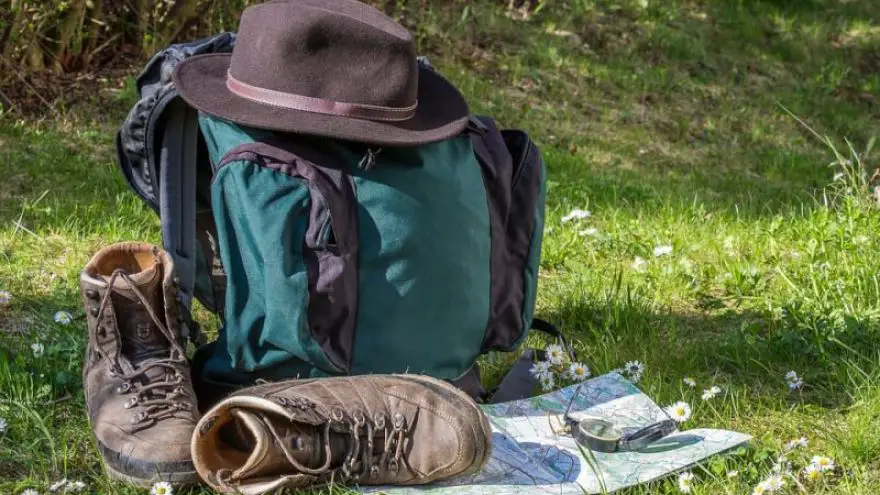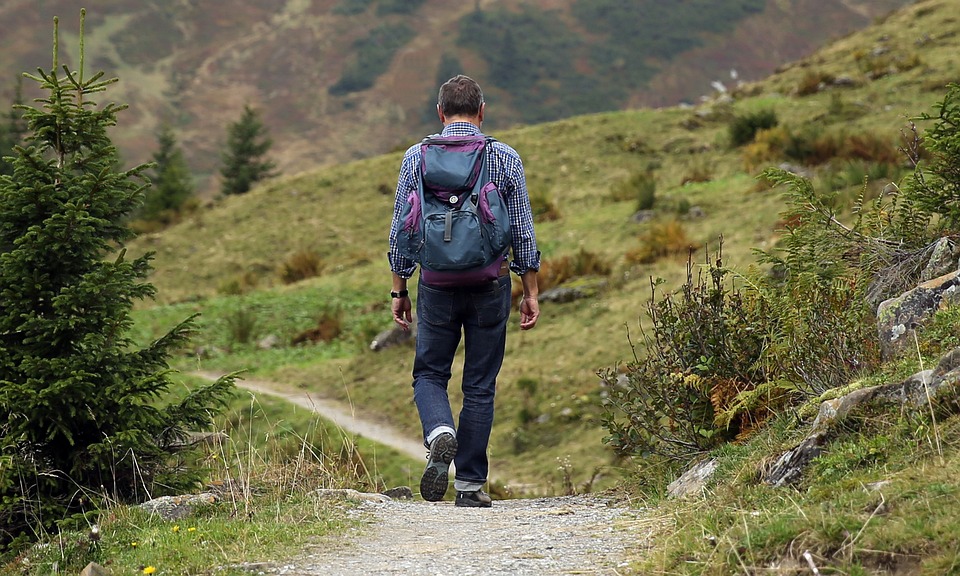Hiking Explained: From Easy to Extreme
 Hiking Explained: From Easy to Extreme
gearweare.net
Hiking Explained: From Easy to Extreme
gearweare.net
Of all the outdoor sports that one may want to get into, hiking is one of the easiest to start doing. That is because the gear and expertise needed to begin hiking at a basic level are minimal. However, at high-level hiking does get more difficult and is even looped into the same system that is used to grade technical rock climbs.
For the beginner hiker, understanding what different types of hike entail in terms of difficulty will ensure that hiking stays safe and fun. Knowing more about the types of hikes will also make it easier for more experienced hikers to progress, as this knowledge provides concrete goals. Read on to get a breakdown of the different types of hiking that one may want to pursue.
Table of Contents
Day Hiking vs. Backpacking

These two styles of hiking are being presented together because they are overarching categories. All types of hiking fall into at least one of these categories, while some styles can actually be done as a day hike or backpacking trip.
Day Hiking
Any hike that is completed in less than one day is considered a day hike. More specifically, this means that the hiker will not be spending the night in the woods and therefore only needs to bring water, food, extra layers, and navigation and emergency supplies with them. This definition does not mean that day hikes can’t dramatically vary in terms of distance and terrain. Some day hikes cover three miles on relatively flat ground and can be completed in a number of hours, while others require hikers to start hiking in the dark, gain thousands of feet in elevation, and traverse more than ten miles in one day.
Backpacking
When backpacking hikers camp along their route, spending multiple days in the woods. Backpackers carry all the gear they need on their back, including a tent, sleeping bag, cooking supplies, multiple days food, extra clothes, and other necessary supplies for survival. Because it allows one to get way out into nature, backpacking is an incredible way to gain a connection to one’s environment and escape from modern life. However, be prepared for a long slug, as these backpacks can be quite heavy for beginners.
Nature Hikes

Nature hikes are a style of mellow hiking that allows one to get out, into the woods without much exertion. These types of hikes see marginal elevation gain, if any, and do not necessarily include summits or views. For those interested in plants, birds, or other types of species identification, a nature hike loop is a great way to view new types of whatever plant or animal one is captivated by.
Nature hikes are typically low mileage and done in the style of a day hike.
Summit Hikes
Mountain ranges can be found all over the country. These strips of elevated land masses are the areas that most frequently capture the attention of hikers. Getting to the top of a mountain is the most common way that hikers enjoy this outdoor sport.
Summit hikes can vary greatly in terms of elevation gained and mileage covered. Furthermore, although many summits are bald, offering gorgeous views, there are many mountains with the highest points that top out below the tree line. Beginners should look for hikes with modest elevation gain and the opportunity for views, which absolutely exist.
Summit hikes can be done in a one day push, or over the course of a few days as a backpacking trip. Those who backpack as a means to summit peaks will often hike to the top of more than one mountain over the course of their trip. This can be done in one of two styles. The first is to hike in a linear fashion across each mountain, carrying all your supplies with you the entire time. The other option is to pitch a tent at the base of multiple mountains and go on days hikes to each summit, returning to base camp each night.
Those who attempt to summit every mountain in a certain region are called “peak baggers”. There are multiple peak lists, including Colorado’s 14ers and the 100 highest mountains in New England, that have been published, and peak baggers attempt to summit every mountain on one of these lists.
Long Distance Hiking

These are hikes that involve traveling hundreds of miles and can take months to complete. All long-distance hikes are backpacked, however, there are a few different ways in which these hikes can be approached.
Through Hiking
Through hiking involves hiking an incredibly long trail from start to finish without stopping. The Appalachian Trail and the Pacific Crest Trail are two examples of incredibly long and very popular through hikes. Completing either of these trails in one push involves the better part of a year living in a tent and hiking almost every day. Properly fitting hiking boots, quality backpacking tent, along with the right hiking gear are essential on these trails.
Section Hiking
Some hikers attempt to complete long trails by doing sections at a time. These sections can vary in mileage and number of days on the trail, and there is no time limit on how long a hiker may take to complete a trail by section hiking. The only requirement is that every part of a trail must be hiked before the hiker can say they successfully section hiked it.
Hut to Hut or Lodge to Lodge Hiking
Huts and lodges can be found along some trails, which allows hikers to spend multiple days on a trail with far less gear. There is no need to bring a tent as one moves from one structure to another. Some lodges, such as those found in the White Mountains of New Hampshire, will even prepare meals for their guests.
The Yosemite Decimal System
One final note – some hikes will receive a number along with their description and difficulty rating. This number, typically 1-4, is the Yosemite Decimal System class system. There is also a class 5, however, this connotates a technical rock climb on vertical rock, which is distinct from hiking. The other numbers should be interpreted as such:
- Class 1 – A hike on a well-marked trail which involves walking over a level and/or marginally uphill ground.
- Class 2 – The trail is not as well marked and some route finding may be involved. The terrain is more difficult to navigate and steeper but not particularly dangerous.
- Class 3 – The use of hands to navigate terrain is necessary, as one will be passing over steep slopes and large rocks. There is exposure and a fall could be catastrophic.
- Class 4 – The use of ropes and technical climbing techniques/gear may be necessary to navigate this terrain. One is using hands and feet, the exposure may be extreme.











